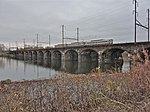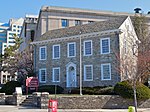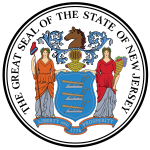Trenton–Morrisville Toll Bridge
1952 establishments in New Jersey1952 establishments in PennsylvaniaBridges completed in 1952Bridges in Bucks County, PennsylvaniaBridges in Mercer County, New Jersey ... and 10 more
Bridges of the United States Numbered Highway SystemBridges over the Delaware RiverBuildings and structures in Trenton, New JerseyDelaware River Joint Toll Bridge CommissionInterstate vehicle bridges in the United StatesRoad bridges in New JerseyRoad bridges in PennsylvaniaToll bridges in New JerseyToll bridges in PennsylvaniaU.S. Route 1

The Trenton–Morrisville Toll Bridge is one of three road bridges connecting Trenton, New Jersey with Morrisville, Pennsylvania. Opened on December 1, 1952, it carries U.S. Route 1 (US 1) and is owned and operated by the Delaware River Joint Toll Bridge Commission.Construction of the bridge took two years to complete, and cost $6,650,000.
Excerpt from the Wikipedia article Trenton–Morrisville Toll Bridge (License: CC BY-SA 3.0, Authors, Images).Trenton–Morrisville Toll Bridge
Trenton Freeway, Trenton
Geographical coordinates (GPS) Address External links Nearby Places Show on map
Geographical coordinates (GPS)
| Latitude | Longitude |
|---|---|
| N 40.2092 ° | E -74.7677 ° |
Address
Trenton–Morrisville Toll Bridge
Trenton Freeway
08608 Trenton
New Jersey, United States
Open on Google Maps











